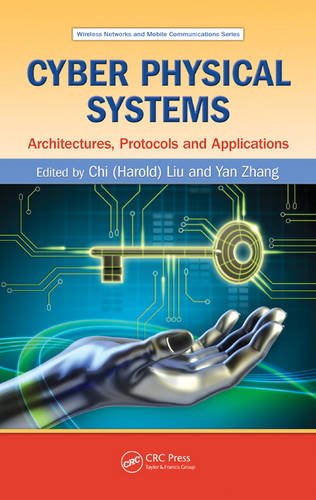

Most ebook files are in PDF format, so you can easily read them using various software such as Foxit Reader or directly on the Google Chrome browser.
Some ebook files are released by publishers in other formats such as .awz, .mobi, .epub, .fb2, etc. You may need to install specific software to read these formats on mobile/PC, such as Calibre.
Please read the tutorial at this link: https://ebookbell.com/faq
We offer FREE conversion to the popular formats you request; however, this may take some time. Therefore, right after payment, please email us, and we will try to provide the service as quickly as possible.
For some exceptional file formats or broken links (if any), please refrain from opening any disputes. Instead, email us first, and we will try to assist within a maximum of 6 hours.
EbookBell Team

0.0
0 reviewsCyber Physical Systems: Architectures, Protocols and Applications helps you understand the basic principles and key supporting standards of CPS. It analyzes different CPS applications from the bottom up, extracting the common characters that form a vertical structure. It presents mobile sensing platforms and their applications toward interrelated paradigms, highlighting and briefly discussing different types of mobile sensing platforms and the functionalities they offer. It then looks at the naming, addressing, and profile services of CPS and proposes a middleware component to meet the requirements of dynamic applications and sensors/actuators deployment/configurations across different platforms.
The middle chapters of the book present a context-aware sensor search, selection, and ranking model which addresses the challenge of efficiently selecting a subset of relevant sensors out of a large set of sensors with similar functionality and capabilities. The authors consider various topics in the energy management of CPS and propose a novel energy-efficient framework. They also present the fundamental networking technologies of CPS and focus on machine-to-machine communications for CPS, specifically the open technologies such as IPv6-based solutions that can be integrated into IoT and enable wireless sensor communications.
In the book's final chapters, the authors bring you up to date on mobile cloud computing (MCC) research activities that enhance the capabilities of resource-constrained smart devices in CPS sensory environments. They also present a few representative CPS applications, including connected healthcare, gaming in public transport crowds, and a series of MCC-enabled emerging CPS applications. You will find that these application fields fully demonstrate the great potential of applying CPS in public life.